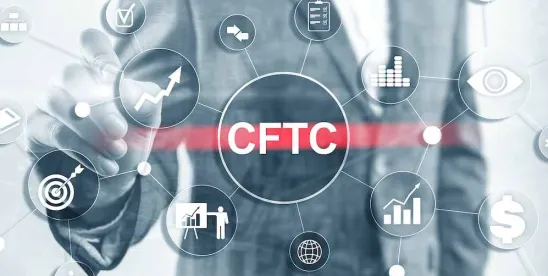The CFTC-SEC Joint Staff Statement on “Project Crypto–Crypto Sprint” (Joint Statement) lands in the middle of an already-active policy cycle. In July, the President’s Working Group on Digital Asset Markets delivered its White House Report, urging both market regulators to “use existing authorities to immediately enable the trading of digital assets at the federal level.”[1] Acting CFTC Chairman Caroline Pham responded with a “crypto sprint,” launching two parallel initiatives: (i) the Listed Spot Crypto Trading Initiative, which invited comment on listing leveraged spot crypto contracts on designated contract markets (DCMs),[2] and (ii) a follow-on Next Crypto Sprint Initiative to address the balance of the White House recommendations.[3]
Against that backdrop, the Joint Statement serves as the first formal, coordinated touchpoint between the CFTC and SEC.[4] The Divisions of Trading and Markets (SEC) and Market Oversight/Clearing and Risk (CFTC) emphasized that current law already permits SEC-registered national securities exchanges (NSEs), CFTC-registered DCMs and foreign boards of trade (FBOTs) to list and trade certain spot crypto asset products, including those offered to retail customers on a leveraged, margined or financed basis. The agencies, therefore, cast the Joint Statement as an invitation for industry to begin filing.
Key Themes: Affirmation of Existing Authority and a Call for Filings
The Joint Statement reaffirms existing statutory requirements and available exemptions. Section 2(c)(2)(D) of the Commodity Exchange Act generally requires retail commodity transactions involving leverage to take place on a DCM or FBOT, unless the product is listed on an SEC-registered exchange.[5] The Divisions expressly restated that exception, reaffirming the permissibility of routing certain spot crypto products through an NSE.
The Divisions also pledge that staff “will promptly review filings and requests” and “stand ready to engage,” echoing Acting Chairman Pham’s earlier promise that the sprint would move at “full speed.” Read together with the CFTC’s concurrent solicitation of stakeholder input and the SEC’s Crypto Task Force, the message is clear: the agencies want spot crypto products in the door and intend to process them quickly.
Practical Considerations for Market Participants
The Joint Statement sketches out a concise checklist that exchanges, clearing organizations and other applicants should address when preparing submissions:
- Margin, Clearing and Settlement – The Divisions confirm that clearinghouses may partner with custodians for customer asset protection and that staff are available to discuss collateral, haircuts and account structures, including the use of payment stablecoins and other digital asset collateral.
- Monitoring of Underlying Markets – The Divisions encourage cross-venue sharing of reference prices to support market surveillance. Applicants should be prepared to describe their data feeds, information-sharing agreements and manipulation-resistance measures.
- Public Dissemination of Trade Data – Transparency remains a core expectation. Proposals should explain how executed trades, depth-of-book and reference rates will be published in real time.
- Promoting Fair and Orderly Markets – The Divisions emphasize that efficient executions and transparency are essential to promoting trading opportunities and competition among market participants and encourage trading venues to apply fair and orderly market principles as they seek to operate markets for spot crypto asset products.
- Innovation with Investor Protections – The Divisions express support for technological innovation in markets and trading, provided that investor and customer protections are maintained. Market participants are encouraged to engage with the agencies on how new technologies, such as smart contracts or novel custody solutions, can be implemented while ensuring robust safeguards.
The Joint Statement validates long-standing exemptions, signals readiness by the CFTC and SEC to mobilize, and offers a roadmap for first-movers looking to list certain spot crypto products on US-registered venues. Firms considering new offerings — or reviving shelved plans — should engage early with the SEC and CFTC, assemble comprehensive submissions addressing the five touchpoints above, and prepare for an accelerated review cycle.
Footnotes
[1] See Katten’s Quick Reads coverage of the President Working Group’s Report here.
[2] See Katten’s Quick Reads coverage of the CFTC’s Listed Spot Crypto Initiative here.
[3] CFTC, Press Release No. 9105-25, Acting Chairman Pham Launches Listed Spot Crypto Trading Initiative (Aug. 4, 2025), https://www.cftc.gov/PressRoom/PressReleases/9105-25.
[4] Note that in 2019, the CFTC, FinCEN, and SEC issued a joint statement on activities involving digital assets clarifying the application of anti-money laundering and countering the financing of terrorism obligations under the Bank Secrecy Act. Leaders of CFTC, FinCEN, and SEC Issue Joint Statement on Activities Involving Digital Assets, US Securities & Exchange Commission (Oct. 11, 2019), https://www.sec.gov/newsroom/speeches-statements/cftc-fincen-sec-jointstatementdigitalassets.
[5] 7 U.S.C. § 2(c)(2)(D).



 />i
/>i

